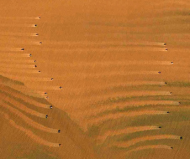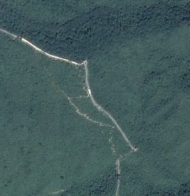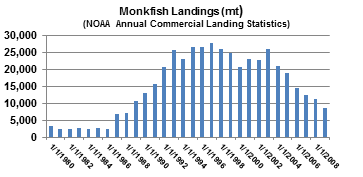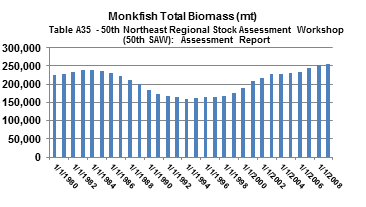Are you getting the idea that if you’re a fisherman Daniel Pauly isn’t on your side?
FishNet-USA/February 22, 2016
Nils E. Stolpe
“… The crisis in the world’s fisheries is less about scientific proof than about attitude and political will. And the world’s fish need a dynamic, high-profile political champion like a Bono or Mandela to give finned creatures the public profile of cute and furry ones.” (Daniel Pauly in Hooked on fishing, and we’re heading for the bottom, says scientist, a 02/17/06 press release by the Natural Sciences an d Engineering Research Council
d Engineering Research Council
This quote by the Pew Charitable Trusts’ premier fisheries researcher says just about all that needs to be said about the ongoing anti-fishing campaign that they have been financing, along with a handful of other mega-foundations, to convince anyone who is willing to listen that, in spite of a dearth of compelling scientific evidence supporting this strum und drang , the world’s oceans are – and have been – facing a crisis brought about because of the depredations of commercial fishermen.
Where are the Kardashian’s when Pauly really needs them?
Just imagine a scientist, any scientist, willing to publicly discount scientific proof and instead embrace the cachet of celebrity to sell his message of doom and gloom in the oceans. And then imagine multi-billion dollar “charitable” foundations eager to support him in these efforts, all in the face of rigorous opposition from well-established scientists who dismiss this rabble rousing for what it is; full of sound and fury but signifying not very much at all.
To help in putting his most recent round of pronouncements on how bad fishing is supposed to be in the proper perspective, I’ve highlighted – because “lowlighted” isn’t yet an accepted term, but there’s always hope – a number of his sky is falling predictions that I’d consider on a par with his “we don’t need sound science, we need high profile personages” plea up above.
The attack of the mud trails!
Back in 2007 Pauly and another researcher generated an inordinate amount of publicity by releasing some satellite images of “mud trails” caused by shrimp trawlers fishing over the Yangtze River delta off China’s coast. Said Pauly of these images “think of the story about China’s Great Wall being the only human artefacts visible from space. Now we can add the mudtrails of trawlers. But not only trawlers from China – from all over the world.” Note that in 2007 Google Earth had been available for several years. Contrary to Pauly’s contention, Google Earth made available via satellite imagery many millions of “human artefacts,” including the four skylights on my house and the patio furniture on the patio. But we wouldn’t want anything like accuracy interfering with a good story, would we?
Pauly’s mud trails (identified only as “satellite photo”), a portion of the Great Wall of China and Casa Stolpe (both from Google Earth)
As far as Pauly’s supposed damage by these mud trails, ten minutes of “research” with Google revealed that the Yangtze River delta contains 500 billion tons of sediment that ranges from three to one hundred and thirty feet deep. Obviously any critters living over or in this sediment are evolutionarily equipped to handle suspended – or resuspended – sediment, and the little bit extra that is kicked up by trawlers isn’t going to amount to a tinker’s damn to any of them. But then again, how effective would this level of crisis mongering be if it was constrained by reality?
And we can’t forget Pauly’s theory of ugly fish
In his article Aquacalypse Now (New Republic, 09/28/09) Pauly wrote that when the oceans had been stripped of the larger, more visually appealing fish, “boats began to catch fish that were smaller and uglier.” While, given any familiarity with the history of seafood consumption at all, I couldn’t imagine his “Bono” or “Mandela” buying into this one, it appears as if nothing like reality is going to stand in the way of a tale Pauly is set on telling. Picture sea cucumbers, oysters, monkfish, sardines, whitebait, eels, lobsters, clams, crabs, palolo worms, geoducks, etc. All of these, and many other small or “ugly” fish and shellfish have been consumed by hungry humans for generations, and I doubt that anyone – other than Daniel Pauly and his associates – have ever decided not to eat any of them because they’re too small or not pretty enough.
Fishing down the food chain? Fishing up the food chain? How about fishing it sideways?
In 1998 Pauly made his notorious, and probably his most controversial, pronouncement of imminent ocean doom due to fishing. To wit, fishermen had caught too many of the top predators in the world’s oceans and as a consequence were catching fish and shellfish lower down on the food chain, and that without more controls on fishermen we were destined to a future with oceans inhabited by nothing but jellyfish and plankton. In Issues For Debate in Environmental Management he is quoted “we are eating bait and moving on to plankton and jellyfish…. My kids will tell their children “’eat your jellyfish.’” The truth of the matter is that if his children lived in Japan or China or in a bunch of other places in Asia they might be telling their kids to “eat your jellyfish” at this very moment.
Needless to say, Pauly is once again attempting to make the commonplace a harbinger of his supposed imminent “oceans crisis.” In fact, dried jellyfish have been a staple of Asian cuisines for millennia. According to Jellyfish fisheries in Southeast Asia by M. Omori and E. Nakano (Hydrobiologia 451: 19-26, 2001) “a few large jellyfish in the order Rhizostemeae constitute an important food in Chinese cooking. For more than 1700 years they have been exploited along the coasts of China.” This would appear to make Pauly’s belief in the evils of modern fishing based on jellyfish consumption somewhat untenable. It’s highly unlikely that commercial fishermen – or whatever they might have been called back in 200 Anno Domini or thereabouts – had fished down their food chain, so that sort of leaves out jellyfish consumption as an indicator of much of anything other than a desire to eat jellyfish. But it appears as if something as ancient and as culturally acceptable as eating jellyfish can be distorted to reinforce his crisis mongering, he’s going to use it.
(see Ray Hilborn’s Myths – Fishing down food webs at https://rayhblog.wordpress.com/myths/.)
Shifting baselines?
In 1995 Pauly wrote “each generation of fisheries scientists accepts as a baseline the stock size and species composition that occurred at the beginning of their careers, and uses this to evaluate changes. When the next generation starts its career, the stocks have further declined, but it is the stocks at that time that serve as a new baseline. The result obviously is a gradual shift of the baseline, a gradual accommodation of the creeping disappearance of resource species, and inappropriate reference points for evaluating economic losses resulting from overfishing, or for identifying targets for rehabilitation measures.” (Anecdotes and the shifting baseline syndrome of fisheries, Postscript in TREE vol 10, no. 10, October 1995.)
It appears that – at least at the time and perhaps still – he believed that fisheries scientists arrived on the scientific scene in discrete generations, once every 25 years (that’s what a human generation is generally accepted to be), to replace the previous generation, and that the new generation discounted everything that the previous generation observed and recorded. As compelling as others of his fables are, on the face of it this seems to make sense. But does it really?
I strongly suspect that if you visit a college/university fisheries department (perhaps the University of British Columbia’s) or a government research facility (perhaps the NOAA/NMFS Northeast Fisheries Science Center in Woods Hole, MA) you won’t find a staff of scientists of similar or identical age, none younger and none older. I sure haven’t. You’ll find scientists and technicians beginning their careers, ending them, and at every stage in between. And those scientists and technicians don’t start from some particular point in amassing new data and coming up with new theories. In spite of Pauly’s contention – because it makes his indictment of modern fisheries science and modern fisheries scientists seem more believable – they base their work on what’s been done before. For example, the bottom trawl surveys performed annually by the Northeast Fisheries Science Center in Woods Hole, MA go back to 1950, spanning most of three generations. But, in spite of Pauly’s contention,, they were certainly not performed and analyzed by three separate and distinct cohorts of scientists and technicians who paid no attention to the survey results obtained prior to when their “generation” took over. The results of these surveys provide the foundation for the assessments of many of the species in our northeast region. Among other things, science – at least science as performed by most scientists but perhaps not by Pauly and his “generation” at UBC – is a continuous process, scientists building on, adding to or subtracting from the work of their predecessors.
But Pauly’s shifting baselines construct demands that this not be the case, so like all of us who at some point in childhood believed that by wishing we could bring Tinker Bell back from wherever fairies went to after exiting Wonderland, he apparently believes – or wants us to believe – that reality actually mirrors the world he has imagined to support his pronouncements.
And as far as his “creeping disappearance of resource species” is concerned, I have yet to learn of any species that has been driven into oblivion by fishing. By creeping development, damming of rivers, habitat degradation and pollution? Yup, but by fishing? The only reasonable response to that would be “show me.” Of course it could be argued that because of fishing the populations of all targeted species are reduced. That’s axiomatic – fishing kills fish. But to refer to that as “creeping disappearance” is just more of the same old same old.
There are, however and unfortunately, some actual, real-life shifting baselines that have nothing to do with fishing that do have a significant impact on finfish and shellfish resources. Primary among them would be those involving the quality of inshore and offshore waters and habitat. Think disappearing wetlands, think household chemicals pollution, think oceans permeated with plastics, think the continuing mass migration of us humans to the coasts. In any instances that are characterized by not enough fish, that lack of fish is far more likely to be a result of these real shifting baselines that it is of too much fishing.
This brings us to Pauly’s most recent exercise in his “blame it all on fishing” campaign
In a short paper in Nature Communications titled Catch reconstructions reveal that global marine fisheries catches are higher than reported and declining Pauly and co-author Dirk Zellar conclude that the world’s fisheries are in even worse shape than had been previously thought because, for a number of plausible seeming reasons, the Food and Agriculture Organization of the United Nations (FAO) has been under-estimating the world’s fish/seafood catch to an increasing degree for the last 30 or so years.
The primary problem with the approach that they used in their analysis is that the harvest of a particular fish stock often has nothing to do with the health of that stock.
As the following graphs show, the only discernable relationship between the monkfish (also known as lotte, one of Dr. Pauley’s so-called “ugly” fish that in spite of his theory to the otherwise has been a staple of Asian and European cuisine for generations) harvest and the monkfish total stock biomass is a fairly dramatic and pronounced inverse one.
I looked at the data for a few other U.S. fisheries and in some the catch went up and down as the biomass varied up and down, some as it varied down and up, and in some there was no relationship between catch and biomass, but, at least with our domestic fisheries, I would be extremely skeptical about making any judgements on the health of a stock based solely (or primarily) on catch statistics.
.It appears as if Pauly and Zellar have fallen into a trap that many people with little or no familiarity with fisheries do. Their methodology assumes that the only thing that drives commercial harvesting is the availability of the particular fish or shellfish being harvested. Nothing could be further from the truth. Fuel costs, foreign exchanges rates, bycatch avoidance, import/export requirements, management measures, competing products, the El Niño/La Niña cycle or the North Atlantic Oscillation (or other decadel or longer duration climatic or oceanic events), natural or man-made catastrophes, other easier/closer/more rewarding alternative fisheries, supply and demand and undoubtedly a number of other factors can and often do impact the level of harvest more than the availability of the particular fish or shellfish.
Dr.Pauly apparently still believes that, in his attempts to conflate science with celebrity to push forward his idea of sound bite fisheries science, that scientific rigor should take a back seat to titillation.
____________________________
The authors acknowledge, and it will probably come as no surprise to most readers, “that The Pew Charitable Trusts, Philadelphia, funded the Sea Around Us from 1999 to 2014, during which the bulk of the catch reconstruction work was performed.” However, it might be news that “since mid-2014, the Sea Around Us has been funded mainly by The Paul G. Allen Family Foundation.” If anyone wonders why one of the founders of Microsoft might be interested in supporting research by Daniel Pauly, from an article in the NY Times last week – Microsoft Plumbs Ocean’s Depths to Test Underwater Data Center (at http://www.nytimes.com/2016/02/01/technology/microsoft-plumbs-oceans-depths-to-test-underwater-data-center.html):
“REDMOND, Wash. — Taking a page from Jules Verne, researchers at Microsoft believe the future of data centers may be under the sea. Microsof t has tested a prototype of a self-contained data center that can operate hundreds of feet below the surface of the ocean, eliminating one of the technology industry’s most expensive problems: the air-conditioning bill. Today’s data centers, which power everything from streaming video to social networking and email, contain thousands of computer servers generating lots of heat. When there is too much heat, the servers crash. Putting the gear under cold ocean water could fix the problem. It may also answer the exponentially growing energy demands of the computing world because Microsoft is considering pairing the system either with a turbine or a tidal energy system to generate electricity. The effort, code-named Project Natick, might lead to strands of giant steel tubes linked by fiber optic cables placed on the seafloor. Another possibility would suspend containers shaped like jelly beans beneath the surface to capture the ocean current with turbines that generate electricity.”
Of course this needs to be coupled with Microsoft’s commitment to the future of “cloud computing” (for those readers who have successfully avoided advanced Nerdhood up until now, the “cloud” is just a lot of web-connected servers housed in what are called server farms. Server farms are becoming increasingly expensive to operate shoreside – see the NY Times article linked above) and do a Google search on “microsoft cloud future” to see where the tech industry thinks Microsoft is heading vis a vis cloud computing.
Is it possible that in the near future we’ll be reading foundation-funded research reports from our neighbors in British Columbia “proving” that submerged server farms put in place by the well-known Redmond conservationists provide much needed shelter for a myriad of marine creatures that are threatened by those rapacious fishermen? Or that Marine Protected Areas are a really logical place to put those submerged servers?
____________________________
For more background on Daniel Pauly’s science:
http://www.atsea.org/doc/Hilborn%202010%20Science%20Chronicles%202010-11-1.pdf
https://www.sciencedaily.com/releases/2013/02/130221192734.htm
http://cfooduw.org/do-catch-reconstructions-really-implicate-overfishing/










